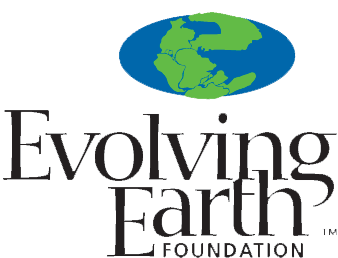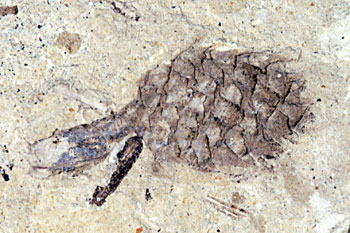Congratulations to the following 2005 Evolving Earth Student Grant recipients:
Barclay, Rich
Northwestern University, Department of Geological Sciences
“Using fossil plant cuticle estimates of pCO2 to understand marine anoxic events”
The marine record has been punctuated by intervals of rapid carbon burial and water column anoxia. This project will use fossil cuticle to assess how pCO2 drawdown at the C-T boundary (93 Ma) as a result of increased productivity may have led to these Oceanic Anoxic Events.
Bowerman, Nicole
Western Washington University
“Holocene Evolution and Paleoclimatic Implications of Glaciation in the Central Sierra Nevada, CA”
Development of the most comprehensive record yet obtained of Holocene cirque glaciation in the Sierra Nevada, California, that will test responses of the glaciers to proposed periods of extreme drought and cooling as well as the timing and onset of Neoglaciation in the range.
Currano, Ellen
Pennsylvania State University, Department of Geosciences
“Response of insect herbivores to Paleocene and Eocene climate change”
Fossil dicot leaves from the late Paleocene and early Eocene of the Bighorn Basin, Wyoming, will be quantitatively censused to test the response of insect herbivory to temperature and precipitation changes.
Desmarais, Emily
Stanford University
“Real-time deformation monitoring and modelling of active Hawaiian volcanoes.”
To create a real-time volcanic deformation modelling computer program. This tool will use real-time data from a dense network of Global Positioning System (GPS) stations to model the time-evolving behavior of the volcano’s surface deformation and magmatic plumbing system.
Hall, Patricia
Northern Arizona University
“Osteolepiforms from the Middle Devonian, Water Canyon Formation of northern Utah”
Excavation and complete description of a new species of osteolepid from the Water Canyon Formation of northern Utah, for paleoenvironmental data and research and phylogenetic analysis.
Hoffman, Matthew
Portland State University, Department of Geology
“Volume Change of glaciers of Olympic National Park”
I will calculate historic volume change of glaciers in Olympic National Park by comparison between historic Digital Elevation Models and current topography derived from oblique aerial photos captured by digital camera from a single-engine airplane.
Kraatz, Brian P.
The Regents of the University of California
“Revised Timing of Eocene – Oligocene Faunal Change Within Asia”
This research will help to constrain the timing of mammalian faunal change within Asia during the Eocene and Oligocene and interpret these events within the context of tectonic and climatic changes as well comparisons to similar faunal changes in Europe and North America.
Mejia, Paula
Florida Museum of Natural History
“Lower Cretaceous pollen and spores from the Caballos Formation – Colombia”
Develop a biozonation of the Lower Cretaceous Caballos Formation in the Upper Magdalena Valley in Colombia, in order to determine the patterns of abundance and diversity of angiosperms in the tropics during their early evolution and dispersal.
Nicholson, Katherine
University of Southern CA, Department of Earth Sciences
“Early Cambrian bioturbation: the advent of metazoan ecosystem engineering”
Benthic metazoans altered the sedimentary fabric of shallow subtidal siliciclastic substrates in the Early Cambrian, when the capability for significant bioturbation first evolved. The goal of this project is to determine the magnitude of this early example of ecosystem engineering.
Peppe, Daniel
Yale University
“Integrated stratigraphy of a terrestrial Paleocene section, Williston Basin, USA”
I propose to utilize a multifaceted approach to develop a high-resolution terrestrial chronostratigraphic reference section for the Paleocene of the North American mid-continent to examine long-term climate change and post-extinction biotic recovery.

